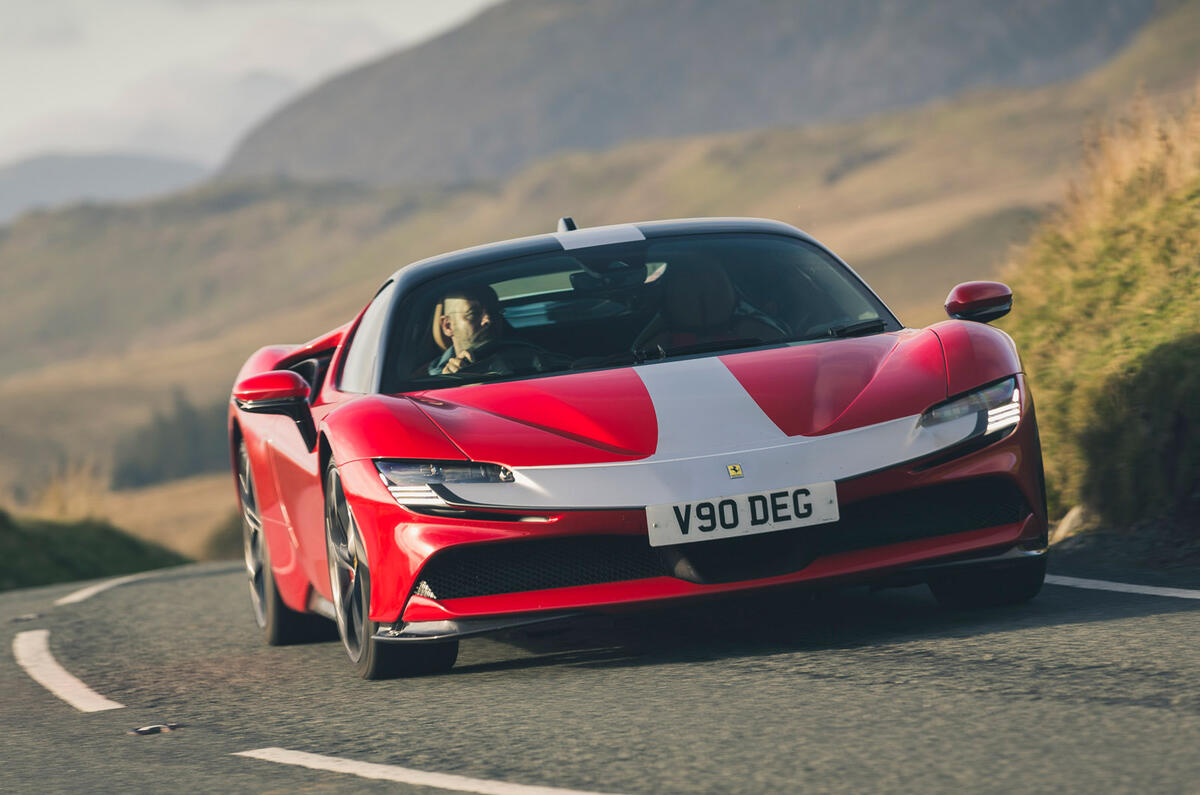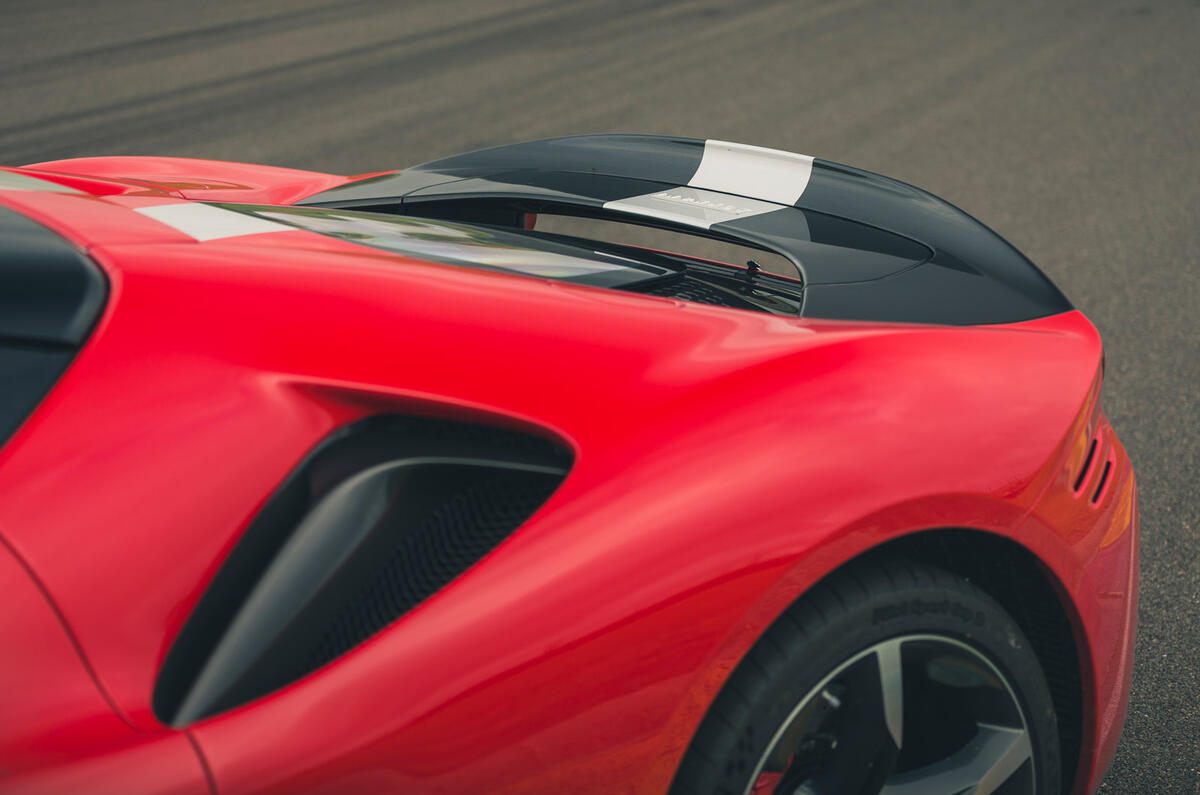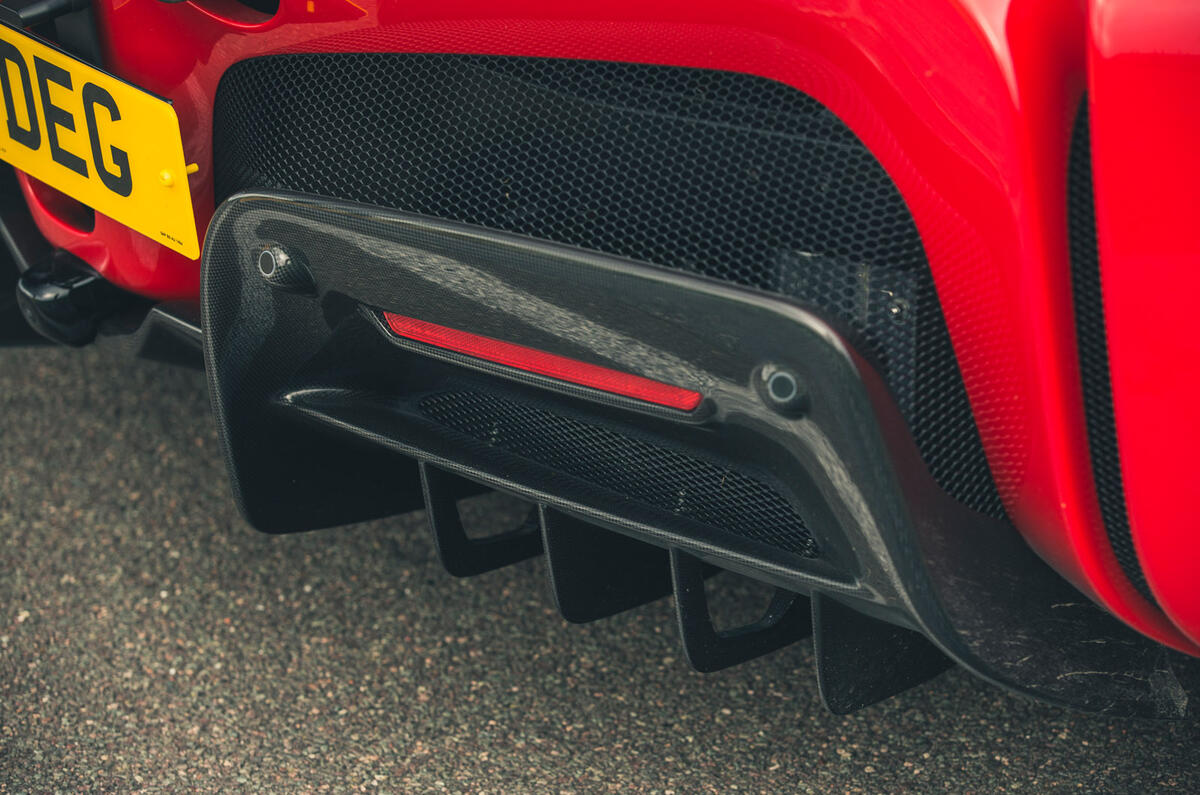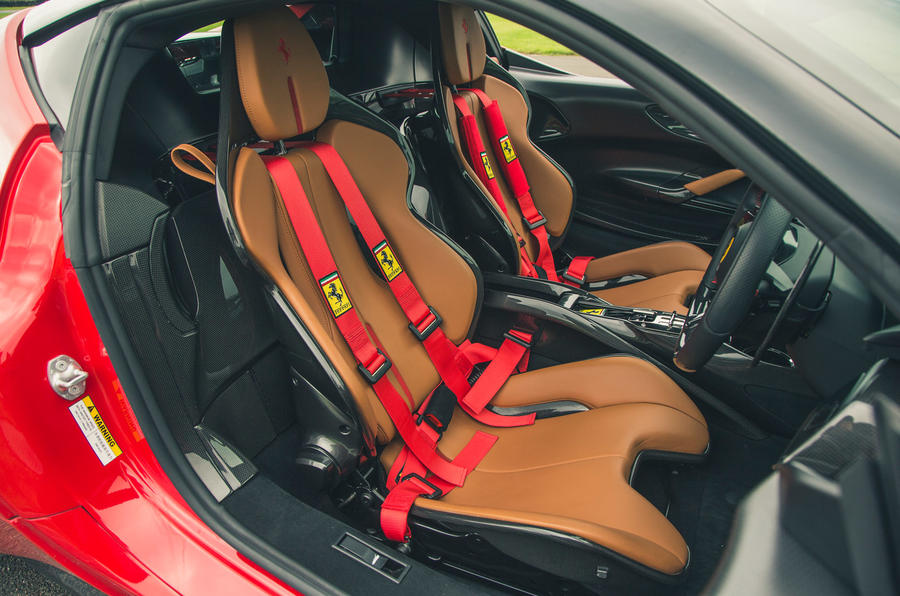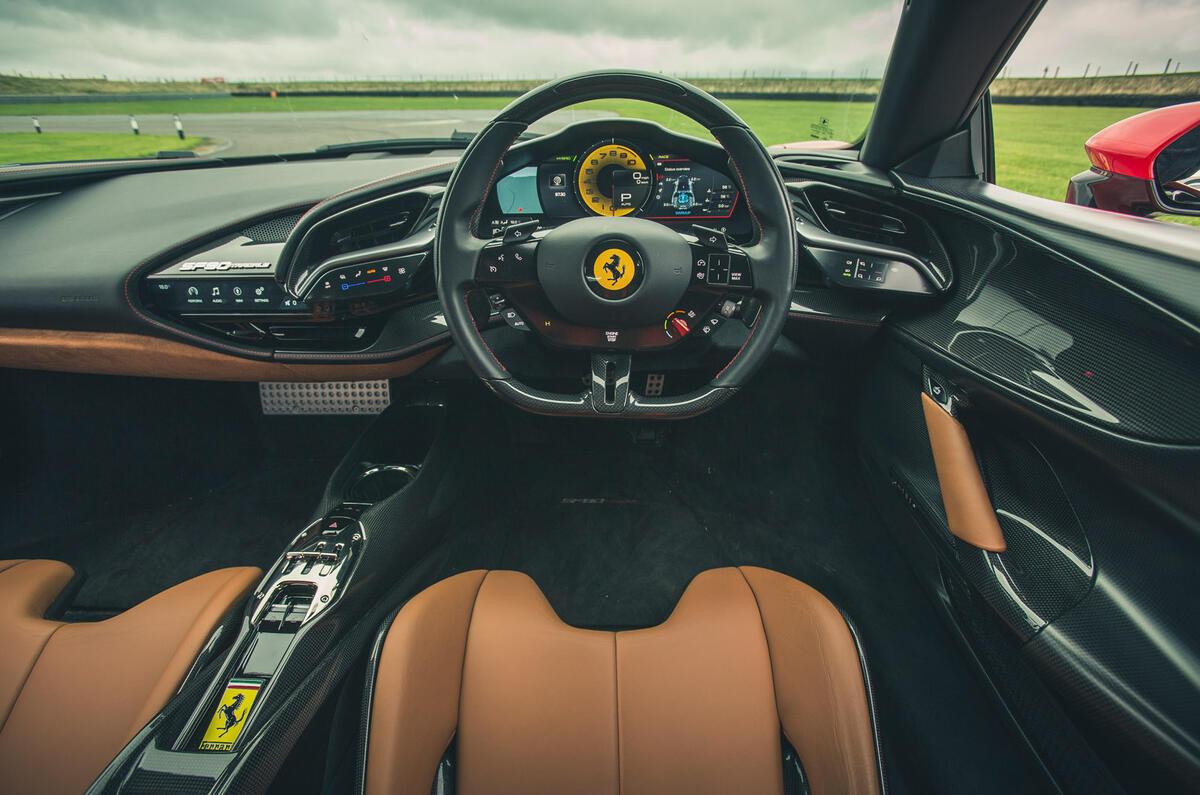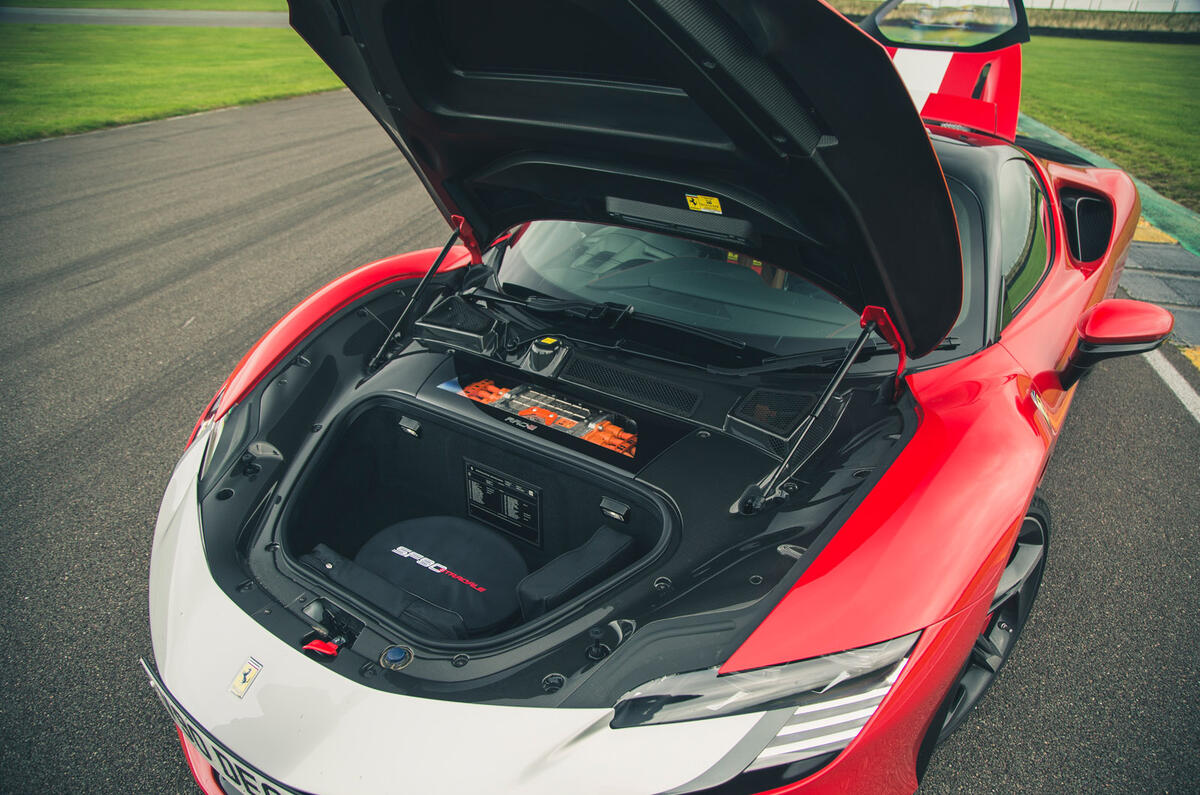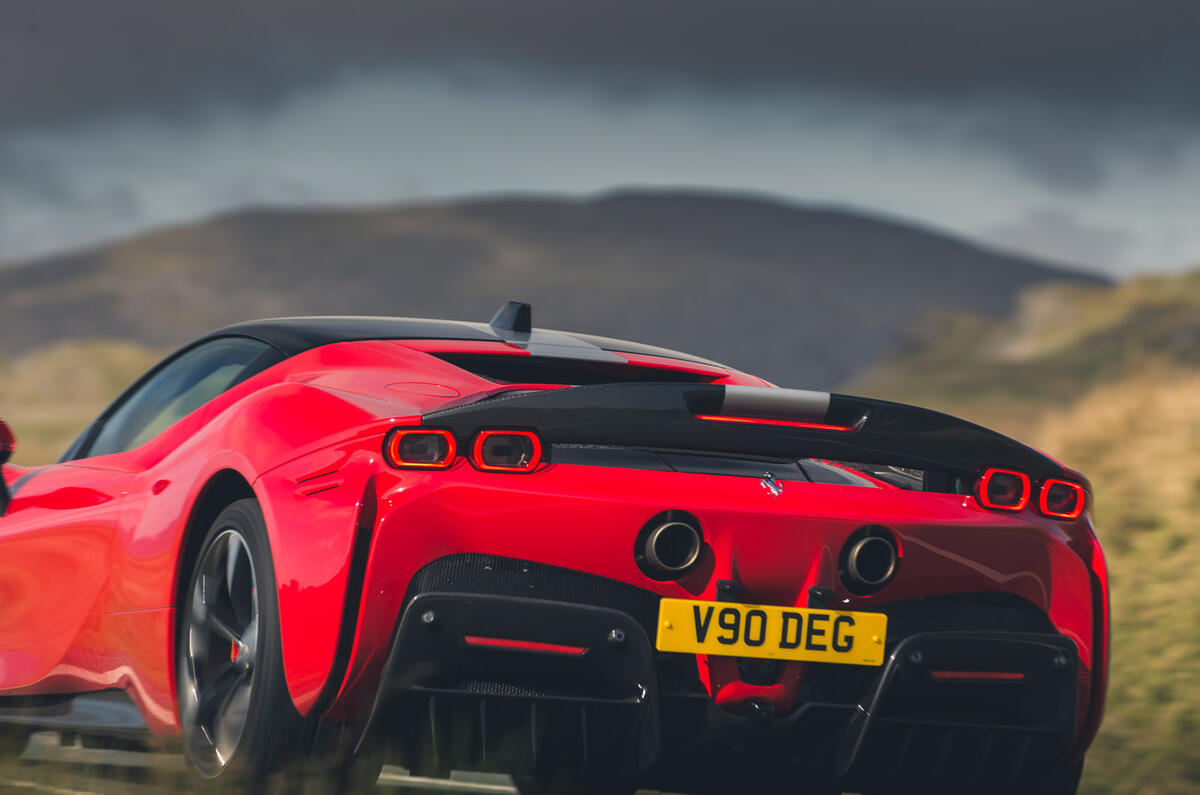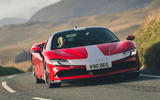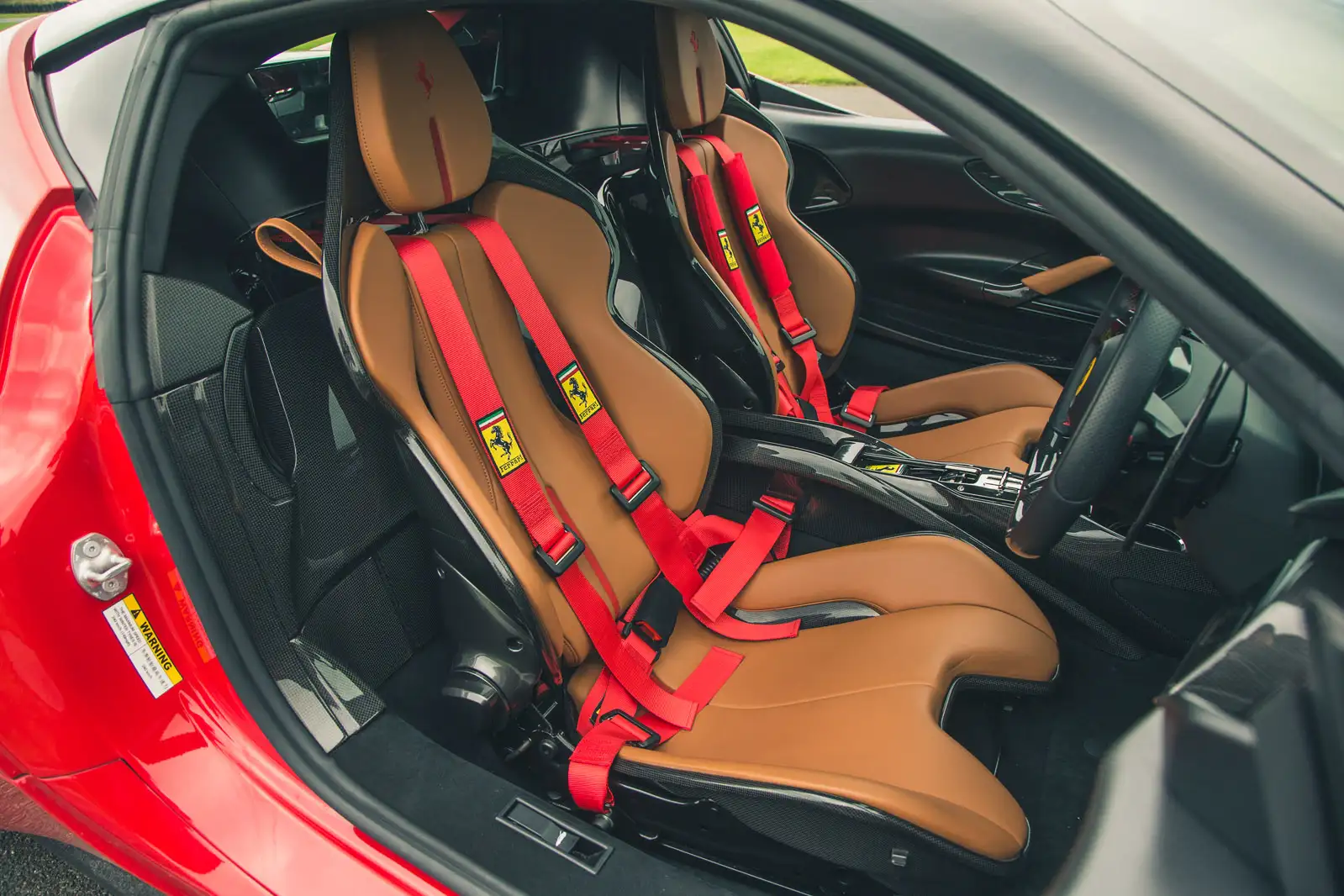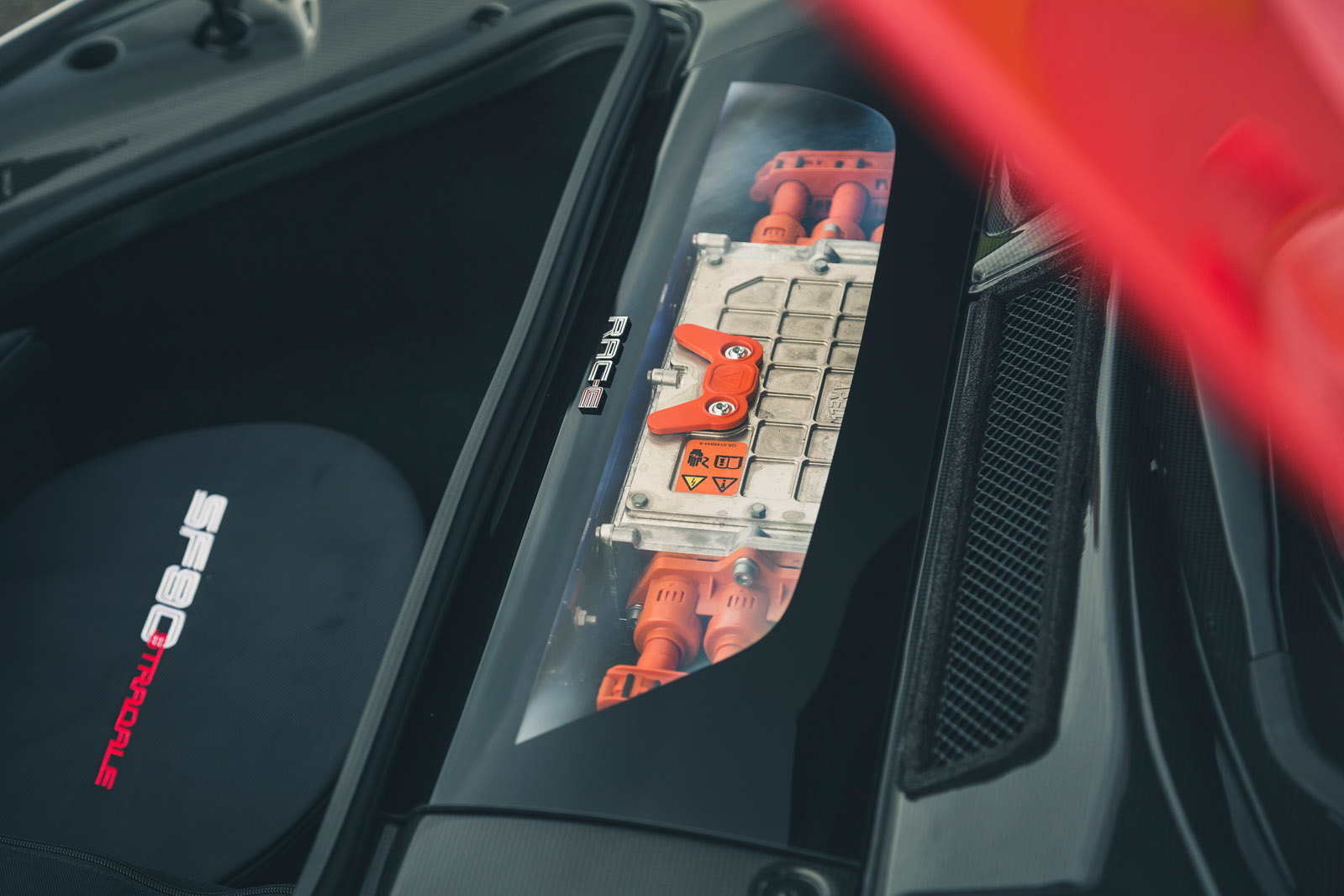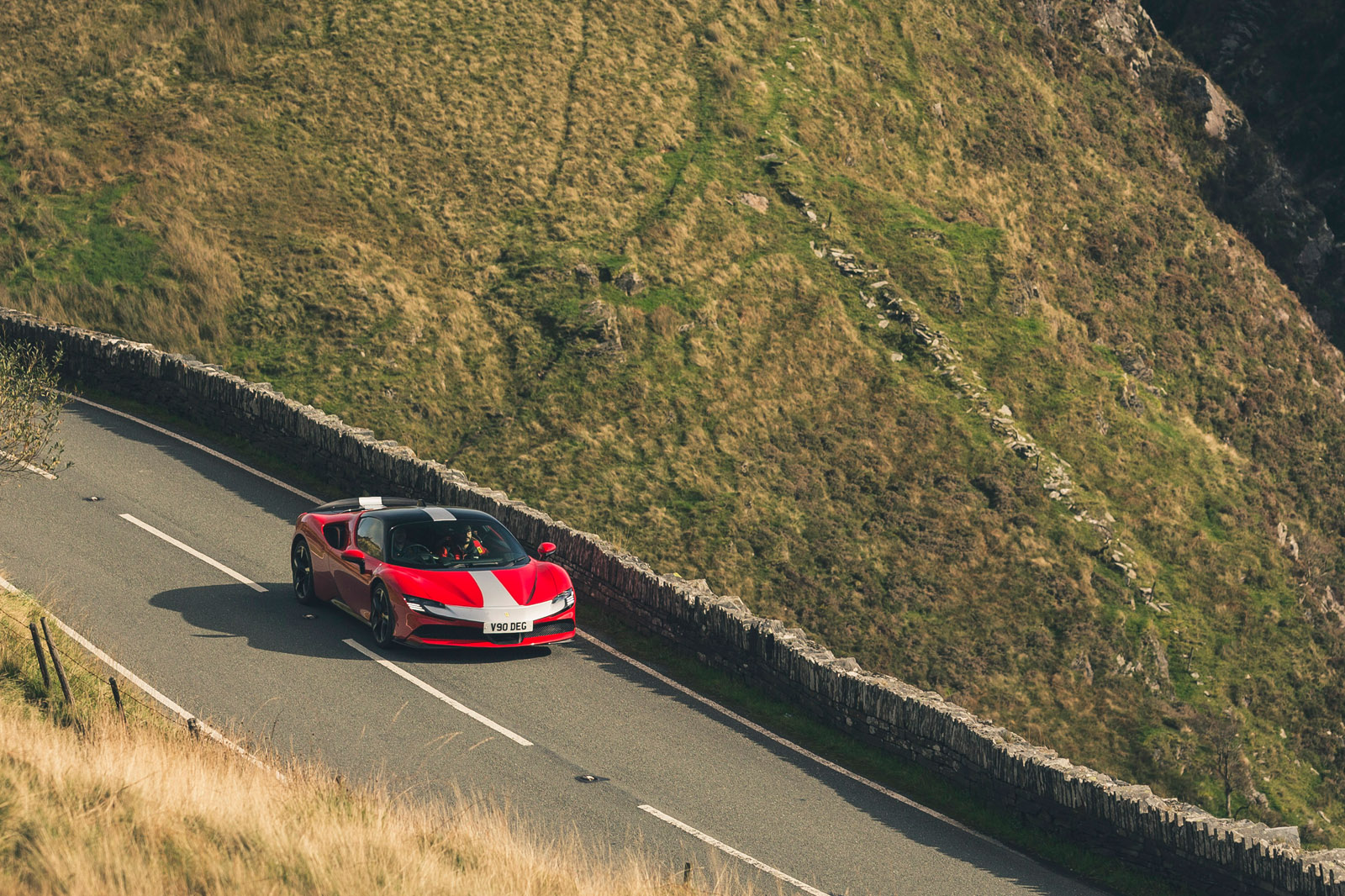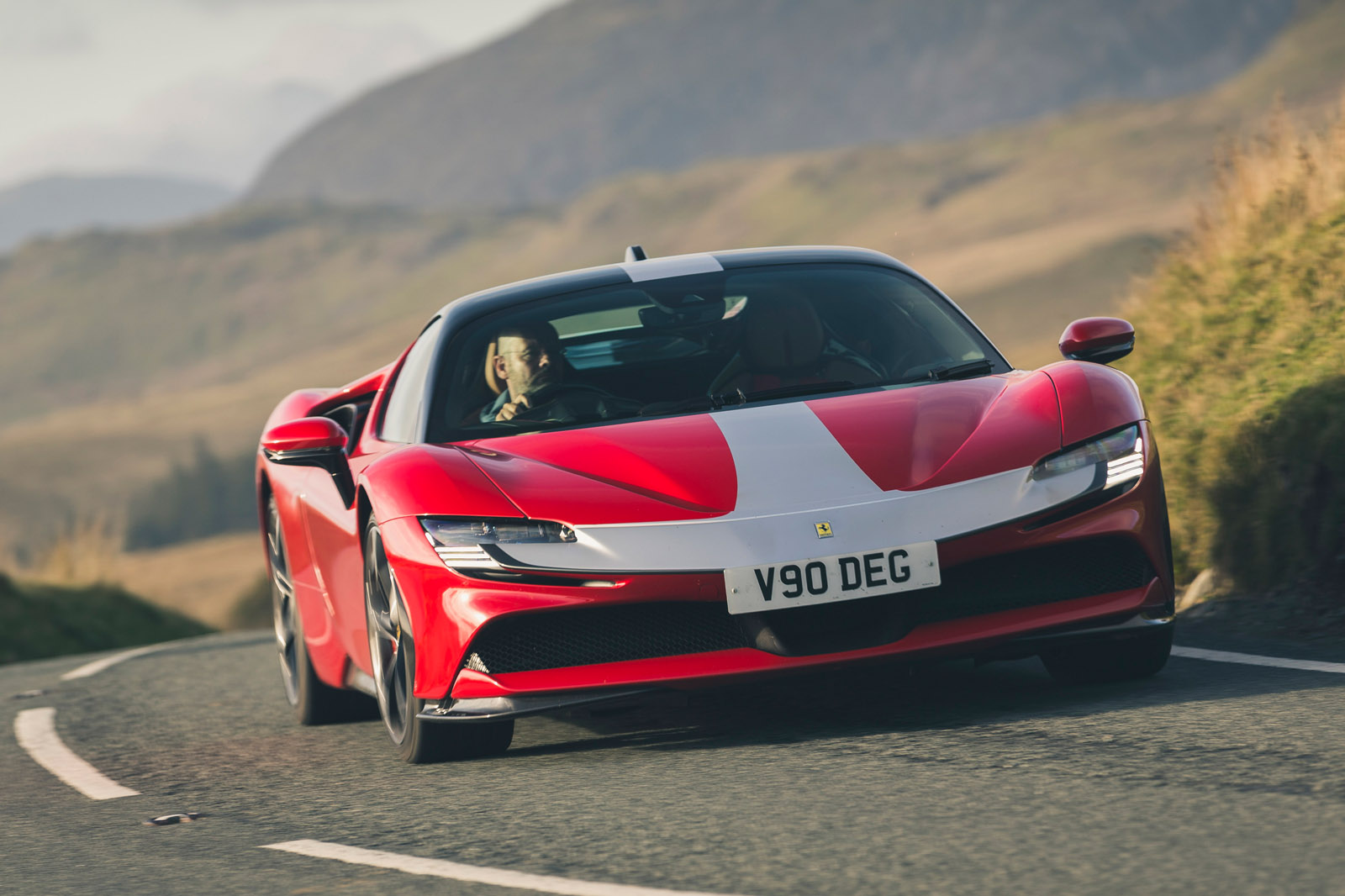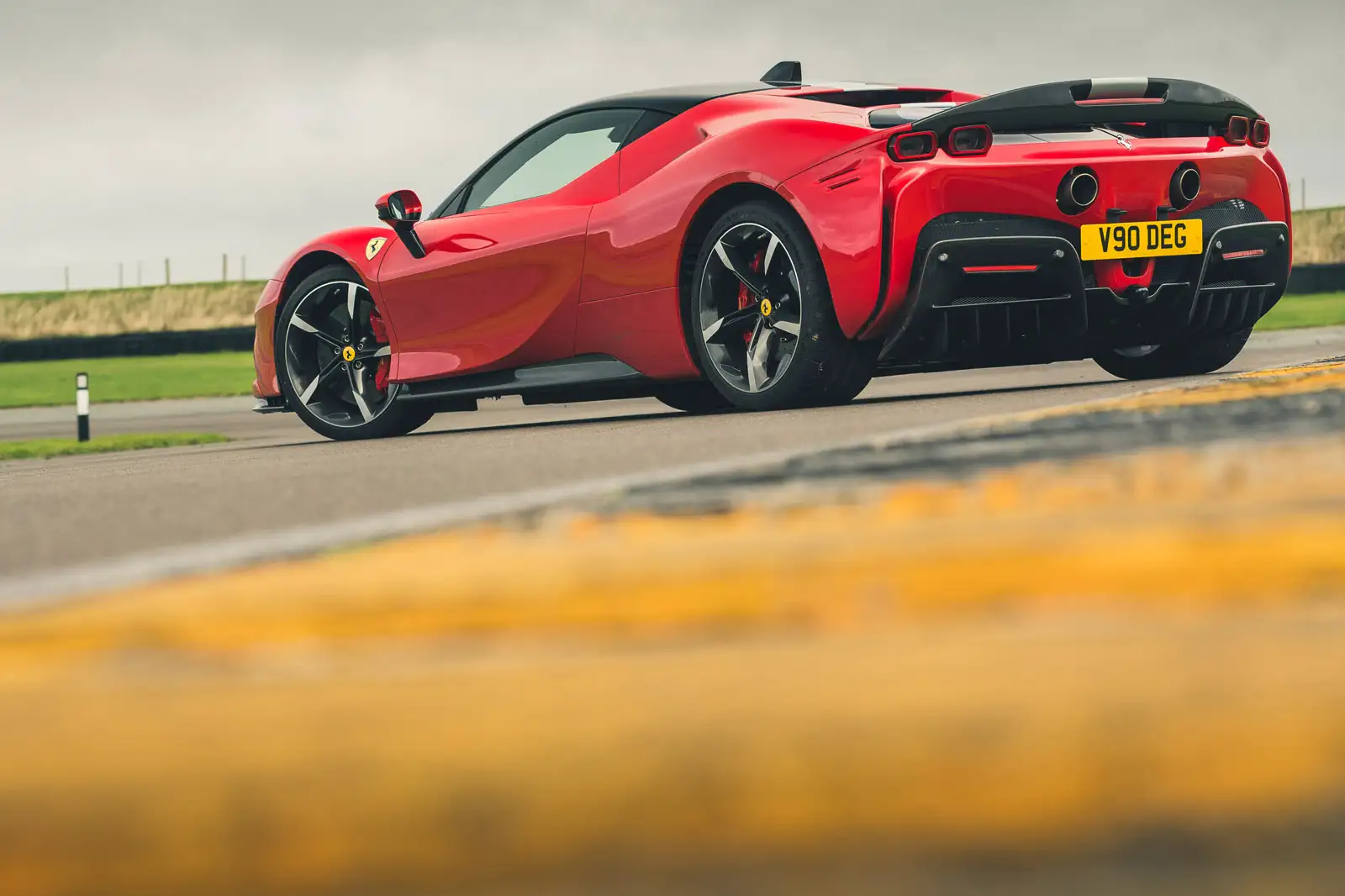Approach the car’s adhesive limits on a track, though, and the uncanny equilibrium of power, traction, agility, poise and handling adjustability that you expect of a mid-engined Ferrari has been driven out. Instead, in its place lies an occasionally brutish and often slightly unpredictable, one-dimensional mutant compromise. Keep the car neat and tidy, drive within its limits and leave its electronics active and it works strikingly well and carries plenty of speed. It’s agile and balanced, stable and true to a fast cornering line, and there’s huge traction to match the equally huge power.
When you investigate its potential to entertain, however, and attempt to indulge with a sliver of power oversteer, or by swivelling its hips on turn-in, you find muddled dynamic characteristics. The V8 engine and electronic rear differential are clearly still capable of flicking the chassis into a positive, playful cornering attitude. The torque-vectoring front axle’s response to that, though, is sometimes to counter it aggressively and quickly before you can really settle into a controlled drift, while at other times it lets you tidy up more of the angle on your own. Either way, the satisfaction of knowing what’s coming, and knowing that you’re in a car that makes dealing with it so easy, isn’t comparable with the mid-engined Ferrari norm.
That only goes with the electronics deactivated, of course. Leave them on and the SF90’s handling is more predictable, albeit perhaps less complex and interesting than you might ultimately like.
SF90 Stradale track performance
Having deposed the mighty Bugatti Veyron on straight-line acceleration, the SF90 Stradale took no prisoners on MIRA’s Dunlop circuit. It lapped 0.2sec quicker than the incumbent lap record holder, the McLaren Senna, smashing a benchmark that had stood for more than two years.
Getting top performance out of the Cup 2 Rs is key to its pace. As with all super-soft road-legal tyres, there’s only a limited number of laps possible before the grip starts to drop away. On a fresh set of rubber running at optimum temperature, Ferrari claims peak grip lasts only up to lap four or five on a typical circuit. After that, grip level will be at least comparable for 10-15 laps, and then it gradually drops away. (Less soft Cup 2s have better longevity.) On regular Cup 2s instead of Cup 2 Rs, it’s unlikely the Senna’s lap record (set on Pirelli Trofeo Rs) would have been beaten.
The SF90 feels heavier on track than the F8 Tributo or 488. It rolls more in fast corners, isn’t quite so agile on turn-in and works its brakes harder.
Comfort and isolation
Even on Ferrari’s Fiorano-pack Multimatic uprated dampers and lightweight springs, the SF90 is a pretty civilised and comfortable supercar. It rides complex country-road surfaces with just enough compliance, and although it feels firmer and fussier when hitting bigger inputs at lower speeds around town, it never jostles you around in truly hardcore fashion. Considering that this is a car capable of lapping a circuit faster than a McLaren Senna, its on-road ride is praiseworthy indeed.
Anyone looking to use this car as the future-proofed, electrified, town-and-country Ferrari of their dreams might still be well advised to avoid that Fiorano pack, though, if only because its high-performance tyres don’t make for a quiet cabin. On the stickiest Cup 2 R rubber, we measured 50mph cruising refinement at some 73dbA, which
is as much noise as most of today’s passenger cars make at maximum engine speed in third gear.
Configured for the track, then, and set with its engine running, this would be yet another modern exotic for earplugs and not for easy conversations. But those concessions apart, it’s a car in which you could tackle long distances very easily. The seats have base height adjustment as an option and decent padding to match their strong lateral support, while visibility out is reasonable, except to the rear. The four-point harnesses of our test car, although fiddly, aren’t fitted as standard.


